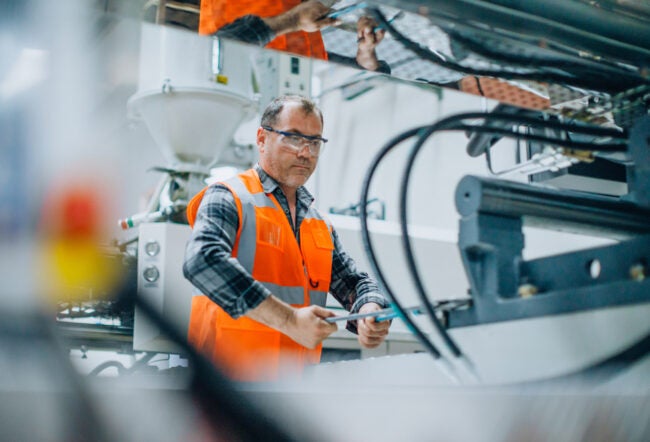Expected economic impact: R$183.2 billion (US$107 billion). Estimated new jobs: 710,000. Projected impact on tourism: R$9.4 billion (US$5.5 billion). As Brazil prepares to host the 2014 World Cup, the front pages of newspapers across the country offer stunning predictions that this World Cup will provide an incredible boost to the Brazilian economy.
Unfortunately, the literature suggests that mega sporting events, such as the World Cup, have been credited with having a greater economic impact than they actually do. Some of the recurring estimation mistakes include (1) overlooking the fact that many internal consumers have relatively fixed leisure budgets, (2) not knowing enough about economic activity patterns of those full-time residents not attending the event, and (3) ignoring the fact that regular tourists avoid already-popular tourist spots. In addition, as seen with previous mega events, the huge investments required to host the event successfully do not always bring the expected economic returns or immediate increases in tourism.
The FIFA (Fédération Internationale Football Association) World Cups held in South Korea-Japan in 2002 and in Germany in 2006 help to reinforce the fallacy of mega events as major economic boosters. South Korea spent approximately US$2 billion to construct 10 new stadia. However, tourism to the region was barely impacted by the incredible investment in infrastructure. The number of visitors was exactly the same during the summers of 2001 and 2002, approximately 460,000. Germany showed a similarly inconsistent immediate economic impact when it hosted the World Cup in 2006.
Despite these somewhat unimpressive economic returns, the World Cup matches in both South Korea and Germany were still considered to be huge successes. In light of this observation, are there other types of benefits — potentially less tangible — that come from hosting such events? If so, do they help explain why cities and countries, particularly in the developing world, are so intent on hosting them? An analysis of Brazil’s decision to host the next World Cup provides interesting answers to this question. An analysis of the projected impact of the World Cup on one of the selected host cities is even better as it provides an opportunity to look more narrowly at the other potential benefits, such as large-scale improvements in infrastructure that might otherwise be politically untenable and a unique opportunity for the country and the city to brand themselves internationally.
Kicking off the World Cup in Brazil
In 2007, FIFA selected Brazil to host the World Cup in 2014. This decision is in line with FIFA’s strategy of rotating the World Cup between the continents and giving new emerging economies the opportunity to host. The selection was, therefore, not a surprise: A South American country had not hosted the event since 1978, and Brazil’s recent economic and political performance continues to amaze the world. As Ronaldo Helal, professor of sociology at the State University of Rio de Janeiro and author of “Passes e Impasses: Futebol e Cultura de Massa no Brasil” (Passes and Impasses: Football and Mass Culture in Brazil), noted in a recent interview, “The country has experienced 16 years of economic stability, 20 years of democratic rule, and has done well during the economic crisis that affected most developed countries in the past few years.”
Currently the eighth largest economy in the world and the largest in Latin America, Brazil was expected to have a GDP growth of 7.8% during 2010. Unlike most countries, the 2008 crisis had a quasi-imperceptible impact on its economy, with a -0.2% GDP growth in 2009.
Salvador, founded in 1549 and capital of Brazil until 1763, is one of the 12 cities selected to host the competition (along with Belo Horizonte, Brasilia, Cuiabá, Curitiba, Fortaleza, Manaus, Natal, Porto Alegre, Recife, Rio de Janeiro, and São Paulo). The city is one of the cultural hearts of the country, and its colonial historical center, Pelourinho, was declared a World Heritage Site by UNESCO in 1985. Salvador has a population of 2.9 million inhabitants and is the third largest city in Brazil, although considerably smaller than São Paulo (10.9 million) and Rio de Janeiro (6.1 million). Salvador contributes about 1% of national GDP and occupies the 11th place nationally. However, due to its high level of inequality, the city occupies the 23rd position in GDP per capita at R$9,240 (US$5,400). In comparison, the city of São Paulo has the highest GDP per capita at R$29,394 (US$17,200).
Salvador’s largest economic sector is tourism, and it is currently the second most popular destination in Brazil after Rio de Janeiro. According to the city’s local government, commercial and services activities account for 75% of the city’s economy and industrial activities account for 25%. The Port of Salvador, located in Bahia Todos Los Santos, is the largest port in the northeastern region of Brazil.
Hosting a World Cup is not an easy venture, especially in a developing country like Brazil. Looking toward the World Cup, each host city has to be prepared in three main areas: the stadium, airport and transportation, and accommodations for tourists. Salvador will receive financing and investments of approximately R$1.24 billion (US$730 million), of which about R$1 billion (US$588 million) will come from the federal government — approximately 6% of the government’s total planned investment in World Cup preparations. The remainder will be provided primarily by the state of Bahia. Observers see this as an enormous net gain for Salvador and a significant opportunity for the city to improve its infrastructure.
Fonte Nova Stadium
FIFA requests that host nations have stadia with seating capacities ranging from 40,000 to 60,000 and be adapted to specific standards, regardless of their locations and plans for long-term usage. Unfortunately, Salvador’s Fonte Nova Stadium does not currently adhere to these norms and is thus in the midst of a major renovation. According to Adriana B. Dantas, from the department in charge of World Cup projects at BNDES (Banco Nacional de Desenvolvimento Economico e Social), “the demolition and reconstruction of the Fonte Nova Stadium will cost R$714 million (US$417 million), from which R$400 million (US$234 million) will come from BNDES funding.” The new stadium will have a capacity for approximately 50,000 people and will include 50 suites for 1,000 people, a press area for 1,600 journalists and a VIP area for 2,500 guests.
One of the key issues when building new stadia is to have a plan in place to maximize their use once the event is over, according to Derrick Heggans, Managing Director of the Wharton Sports Business Initiative. This is precisely one of the concerns often associated with organizing mega events such as the World Cup. Cities end up with stadia that are not used regularly and become known as “white elephants.” Although there are two important football teams in the Bahian capital (SC Bahia and Vitoria FC), analysts fear that Fonte Nova Stadium will become one of these “white elephants” because so few people can afford tickets to sporting events on a regular basis. According to research carried out by SINAENCO (National Association of Architectural and Consulting Engineering Companies), “the most important challenge for Salvador in the 2014 World Cup is to balance the sustainability of the new stadium with the increasing social inequality in the city. The metropolitan region of Salvador presents the highest level of inequality in the country. ‘
Despite this fact and the inability of most residents today to pay for tickets to regular soccer games — which would have to be priced at R$30 (US$18) to make the construction project economically feasible — the emergence of a new Brazilian middle class, known as Class C, might change this equation in the medium to long term.
Salvador’s Strengths: Airport and Accommodations
The greatest challenges for cities often take place outside the playing fields. Host cities need to be prepared to receive a significant number of visitors and have all the necessary facilities in place for a worldwide event like this. During June and July 2014, when the World Cup will take place, Brazil expects approximately 600,000 foreign tourists and 3.1 million domestic tourists, according to the Brazilian Sports Ministry.
As a major tourist destination, Salvador already has an airport handling six million people annually (about 80% domestic travelers and 20% foreign), indicating that the city can manage the approximately 300,000 people who will be arriving during the matches in 2014. Dantas pointed out that, “according to Murilo Barboza, president of the airport infrastructure company of Brazil [INFRAERO], Salvador International Airport is already prepared for receiving the additional demand during the 2014 World Cup.”
Similarly, the number of hotel accommodations is already nearly adequate. The 24,000 beds currently available in Salvador will need to be increased to approximately 30,000 over the next four years.
With these amenities in place, Salvador seems well-prepared to cater to the large number of tourists who will be visiting during the World Cup. However, what will happen to Salvador’s existing tourists at that time? Will they feel crowded out?
Salvador’s high season for tourism runs from December to March and is highlighted by the Carnival Festival, which usually takes place in February. Since the World Cup begins in June — one of the worst months for tourism in the city — a crowding-out effect is not expected. On the contrary, Salvador views this as a unique opportunity to increase the number of visitors during the low season while boosting the city’s long-term appeal to traditional tourists through the renovations being implemented with the influx of government funding and investments.
Yet while the Bahian capital may be in a good position with respect to its airport and accommodations, it is seriously lacking in the area of urban transportation. This is Salvador’s greatest need in the run-up to the World Cup; its successful management could become the best benefit for the city in the long term. The city’s authorities need to improve the public transportation system by adding more capacity to avoid the current peak-hour traffic jams. Several projects are underway, at an estimated cost of R$1.3 billion (US$760 million), including the extension of subway line 1, which will have a daily capacity of 250,000 passengers; improvements to subway line 2, which will connect the airport to the hotel area and city center; and the integration of the different public transportation systems (the Transalvador project). In addition, the BRT project, a fast commuter bus, will connect the northern area of Salvador with the airport at a cost of R$567 million (US$332 million).
Beyond the Economic Myth: Image and Infrastructure
Brazil, as a rapidly developing country with the resources to host the World Cup, is perhaps also uniquely qualified to benefit from such a mega event. The analysis presented here makes the case for conceptualizing the World Cup, not as a direct stimulator of the economy, but perhaps more as one of the single best opportunities for a country to improve its internal infrastructure. The 2014 World Cup presents the country — and its cities, in particular Salvador — with a unique opportunity to upgrade its transportation system above all else. As one looks at Brazil’s current state of development and the degree to which it has grown over the last two decades, improvements in this arena will definitely help the country show the world that it belongs in the major leagues.
As Joao Alberto Viol, president of SINAENCO, noted in a recent interview: “Our involvement with the 2014 Cup is directly linked to our desire to show the importance of this event for the development of Brazilian infrastructure, with the objective of giving — starting in 2015 — greater visibility to international tourism and moving Brazil one step closer to fully integrating itself in the world of developed countries.”
Wolfgang Maenning, in his assessment of the 2006 World Cup in Germany, writes that, despite the limited economic success of the event, “Of more significance … are other measurable effects such as the novelty effect of the stadiums, the improved image for Germany and the feel-good effect for the population.” As a result of the World Cup, he adds, “the perception of Germany has risen in other countries. The erstwhile image abroad of Germany as ‘hard and cold … not a nation much associated with warmth, hospitality, beauty, culture or fun’ was improved through the World Cup….”
Similarly, Willi Lemke, special advisor to the UN Secretary-General on Sport for Development and Peace, said in a recent interview about the 2010 World Cup in South Africa: “[Image] has long been a problem in Africa, and when the media focus on scandals and other problems, that only serves to make the vicious circle even bigger…. It is incredibly important that Africa manages to get people talking about the positive side for once. South Africa has the perfect opportunity to show the world its beauty, its animal world, its culture, its diversity and its happy people.” In 2014, Brazil will have a similar opportunity.
As Helal put it: “The World Cup is going to be a very symbolic moment for Brazil. Like in 1950 [when Brazil last hosted the World Cup], Brazil wants to show the world its great capacity for growth and its role as a ‘great nation.’ The difference from 1950 is that the country is, in fact, experiencing a very special moment in its history. Brazilian people will be very mobilized for the event.”
This article was written by Veronica de la Cerda, Mariana Fernandes, David Huebner, Carmen Madanes and Jordi Suarez, members of the Lauder Class of 2012.



